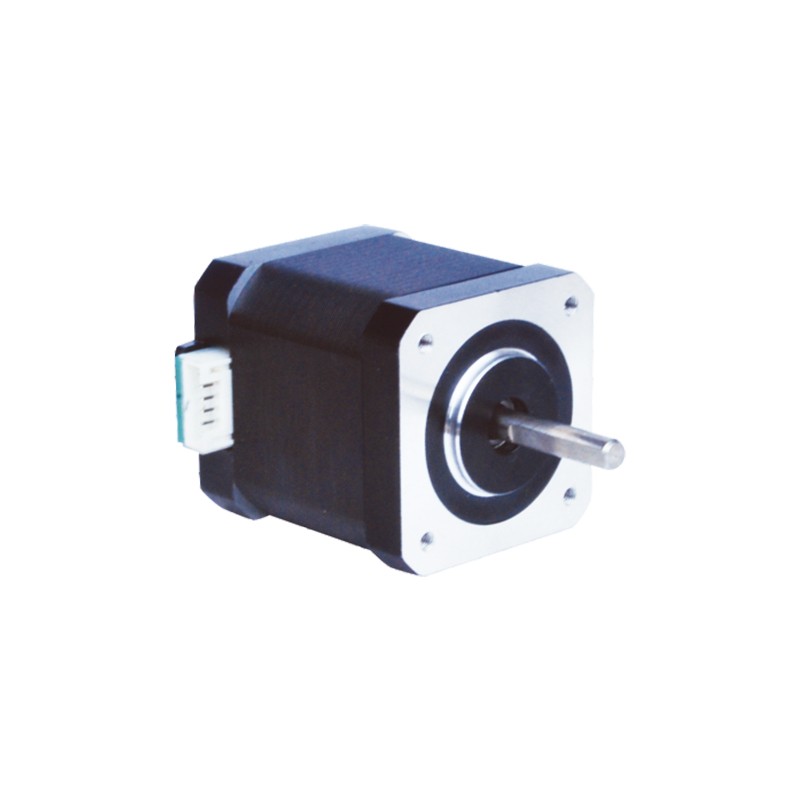Source:Industry News Release time:2022-03-07 Clicks: Popular:Reduction motor manufacturer

Stepper motors are specialized motors designed to precisely control position and speed. Its working principle is to use electronic circuits to convert direct current into time-sharing power, multi-phase sequential control current, and use this current as a stepper motor power supply. The stepper motor can work normally, and the driver is a time-sharing power supply and a multi-phase sequence controller for the stepper motor. Let me introduce to you the differences between 42, 57 and 86 stepper motors.
42 stepper motor refers to a stepper motor with a mounting base size of 42mm, and its maximum output torque is 0.5NM;
57 stepper motor refers to a stepper motor with a mounting base size of 57mm and a maximum output torque of 3.0NM;
86 stepper motor refers to a stepper motor with a mounting base size of 86mm, which is a high-precision motor.
42 series two-phase stepper motor parameters:
Step accuracy 5%
Temperature 80℃ Max
Ambient temperature -20℃—50℃
Insulation resistance 100M Ω Min 500VDC
Withstand voltage 500V AC 1 minute
Maximum radial runout 0.02mm (450g load)
Maximum axial runout 0.08mm (450g load)
57 series two-phase stepper motor parameters:
Insulation resistance 100M Ω Min 500VDC
Withstand voltage 500V AC 1 minute
Maximum radial runout 0.02mm (450g load)
Maximum axial runout 0.08mm (450g load)
86 series two-phase stepper motor parameters:
Step accuracy 5%
Temperature 80℃ Max
Ambient temperature -20℃—50℃
Insulation resistance 100M Ω Min 500VDC
Withstand voltage 500V AC 1 minute
Maximum radial runout 0.02mm (450g load)
Maximum axial runout 0.08mm (450g load)
The above content is an introduction to the differences between 42, 57 and 86 stepper motors. The biggest feature of the stepper motor is its "digitization". For each pulse signal sent by the controller, the stepper motor is driven by its driver. If a series of pulses are received, the stepper motor will continuously run the corresponding distance. At the same time, the motor speed can be directly controlled by controlling the frequency. Because the working principle of stepper motors is easy to learn and use, has low cost (compared to servo), and the motor and driver are not easily damaged, it is very suitable for microcomputer and microcontroller control applications.
Recommended reading
Does the stepper motor need to be equipped with a reduction motor?
Analyze the difference between planetary reducer and other reducers
Related Information
CGXZK085
2021-01-13CGXZK115
2021-01-13CGZF-042L1-5-P2
2020-12-21Stepper motor
2020-12-21CGH-090L1-10-P1
2020-12-21Stepper motor
2020-12-21Stepper motor
2020-12-21Three phase motor
2020-12-21Planetary reducer
2021-04-15Brake motor
2020-12-21Planetary reducer
2020-12-21CGX060
2021-01-13CGF-090L1-10-P2
2020-12-21Stepper motor
2020-12-21Planetary reducer
2021-04-15Analyze the difference between planetary reducer and other reducers
2022-11-28In what fields are stepper motors with brakes mainly used?
2022-06-29Things to note when choosing a stepper motor model
2022-07-15Analysis of shaft breakage problem of right-angle planetary reducer
2022-10-11Introduction to the characteristics of common linear reduction motors
2022-06-20Analysis of measurement methods for stepper motor speed changes
2022-07-14Solution to sudden failure of reduction motor
2022-09-07What is the function and working principle of the reduction motor?
2022-08-09Things to note when using stepper motors
2022-03-01Advantages and Disadvantages of DC Brushed Motors
2020-12-19How many cooling methods are there for disc planetary reducer lubricating oil?
2022-10-13Common cooling methods for linear reduction motors
2022-11-03Introduction to cylindrical gear reduction motor
2022-08-24What are the main uses of reduction motors?
2022-07-25Introduction to windings of angle reducer
2022-10-22